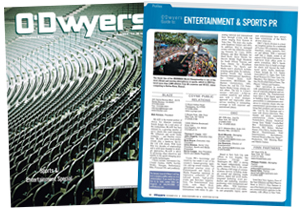 Today’s consumer is immersed in a deluge of raw and processed content, their attention absorbed by a 24/7 Internet vortex where they communicate on social networks, watch their favorite television shows via streaming media, research products through websites, tune into breaking news and follow their favorite brands and celebrities.
Today’s consumer is immersed in a deluge of raw and processed content, their attention absorbed by a 24/7 Internet vortex where they communicate on social networks, watch their favorite television shows via streaming media, research products through websites, tune into breaking news and follow their favorite brands and celebrities.
What does this mean for marketing and communications professionals seeking to influence purchase behavior? It means that today’s connected world challenges marketing communications professionals to actively seek a new and progressive approach in influencing purchase behavior.
The historical consumer purchase path was linear, moving through awareness, consideration, preference, purchase and loyalty. Print and broadcast media relations served that linear path well, but media has evolved, and the consumer purchase path has been disrupted by a proliferation of digital and social media.
This constant connectivity is influencing behavior among consumers, especially among the millennial populations that grew up with technology. It breeds a continuous search for and consumption of content to educate, entertain and engage. This opens up opportunities for communications professionals to engage with consumers who are constantly in the consideration phase. As a result, brands are now required to play a more aggressive role in managing and facilitating disruptions to the purchase path to ensure that they are building constant awareness among consumers through earned, shared and paid media. These disruptions could come in the form of reviews, curated content, blogger outreach, social media postings and peer-to-peer conversations.
Passion drivers that provoke change
|
|
For today’s marketing communications professional, disrupting the customer’s path to purchase means identifying a set of passion change drivers, or accelerators, that influence and motivate people to switch to a competing brand or service. Those passion change drivers and accelerators are more about associated emotions than simply the attributes a product delivers to an audience. Understanding these personal and emotive factors, what we call the “stickiness” that drives a consumer’s affinity for a brand, allows marketing professionals to design campaigns and messaging that pinpoint with laser accuracy the intersections with traditional and social media channels. Defining these passion change drivers can be a challenge for many brands, but it’s an opportunity to provoke the consumer to change their purchase decision.
While there are a variety of passion change drivers to consider, three that cover a multitude of categories include “trailblazer status,” “rating / reviews focused” and a “sense of belonging.”
Trailblazer status: The rapid pace of innovation and product launches, ranging from mobile and gaming devices to content distribution platforms, is overwhelming to most consumers. This isn’t so for the trailblazer, who wants to be the first among his friends to purchase. They are constantly on the lookout for the next big thing but may still hold allegiances to a particular brand. Therefore, communications professionals need to devise campaigns that intercept these trailblazers during the awareness and consideration process by leveraging voices of authority that influence their decisions. The objective is to move them to abandon their trusted allegiance, and not only to communicate the key product attribution differentiators but also the emotional innovation drivers.
Ratings/reviews focused: We all understand that historical “ratings” for film and TV shows have impacted our viewing habits for many years. The credibility of the review was based on an authority who we respected, which is still a viable strategy to reach the mass consumer audience. Then a digital disruption occurred and viewing habits changed. Now ratings and reviews by random voices drive the entertainment, travel, hospitality and retail purchase decisions. They even impact decisions on doctors we visit or power tools we purchase. Random voices that have personal and emotional opinions based on their experiences are the new influencers to buyers’ considerations. Communications professionals must strategize the right approach to leverage those curated voices to provoke change.
Sense of belonging: Another change driver is the personal and emotive sense of “belonging.” Attend a Comic-Con convention and you’ll understand the sense of community that dimensionalizes and drives millennials’ decisions to engage with a brand. This strong emotional connection and sense of community is what must be leveraged to engage the consumer and get them to swap the programs they watch, the technology they utilize, or the subscription services they use to consume content. Communications campaigns with this group need to tap into that idea of community, to ensure sure they’re not left out of the conversation.
Push strategies versus pull strategies
Consumers are increasingly taking more control to “pull” information from media reports, websites, blogs, reviews and brands’ social network sites. The communications professional understands they must constantly seek to build awareness as part of the foundation of a campaign, so their clients brand appears on the consideration list. Yet, awareness is not enough to provoke change.
The social media shift complemented by the era of big data, where brands track activity on social pages and search engines monitor consumer preference, has led to the growth of “push” strategies that are customized to the individual. This allows communications professionals to leverage passion change drivers that can easily identify those consumers with a particular interest and “push” information out to them directly.
The communications landscape will continue to evolve, but provoking consumer consideration through passion change drivers and disruptive “push” strategies allows for today’s competing ideas to be entertained and potentially engaged.
* * *
Tom Tardio is CEO of Rogers & Cowan.



 Abandon traditional content plans focused on a linear buyer progression and instead embrace a consumer journey where no matter which direction they travel, they get what they need, stressed marketing pro Ashley Faus during O'Dwyer's webinar Apr. 2.
Abandon traditional content plans focused on a linear buyer progression and instead embrace a consumer journey where no matter which direction they travel, they get what they need, stressed marketing pro Ashley Faus during O'Dwyer's webinar Apr. 2. Freelance marketers and the companies that hire them are both satisfied with the current work arrangements they have and anticipate the volume of freelance opportunities to increase in the future, according to new data on the growing freelance marketing economy.
Freelance marketers and the companies that hire them are both satisfied with the current work arrangements they have and anticipate the volume of freelance opportunities to increase in the future, according to new data on the growing freelance marketing economy. Home Depot's new attempt to occupy two market positions at once will require careful positioning strategy and execution to make it work.
Home Depot's new attempt to occupy two market positions at once will require careful positioning strategy and execution to make it work. Verizon snags Peloton Interactive chief marketing officer Leslie Berland as its new CMO, effective Jan. 9. Berland succeeds Diego Scotti, who left Verizon earlier this year.
Verizon snags Peloton Interactive chief marketing officer Leslie Berland as its new CMO, effective Jan. 9. Berland succeeds Diego Scotti, who left Verizon earlier this year.  Norm de Greve, who has been CMO at CVS Health since 2015, is taking the top marketing job at General Motors, effective July 31.
Norm de Greve, who has been CMO at CVS Health since 2015, is taking the top marketing job at General Motors, effective July 31.


 Have a comment? Send it to
Have a comment? Send it to 
No comments have been submitted for this story yet.